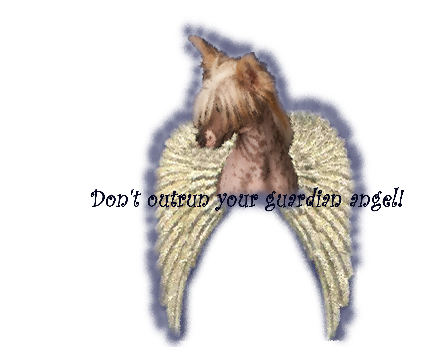Hardly a month goes by that I do not receive an email asking for advise on Chinese Crested skin care. I
thoroughly understand. When I got my first Chinese Crested, I literally cried with frustration fighting blackheads, whiteheads, and, of course the
inflammation that comes along with them. Unfortunately, although I found many treatments listed on the web from other breeders there was no scientific information easily available concerning this issue. I decided to tackle the problem. A number of years later this is what I have discovered...Chinese Crested are not hairless. Unlike American Hairless Terriers who are and who have lovely skin, Crested have a rudimentary hair within the
follicle. This is one of the reasons they have blackheads and whiteheads. The fact they have a lower level of
histamine in their system means they cannot fight off skin infections as easily as other breeds. So what do we do? My advise is avoid antibiotics and steroids. They simply
suppress the problem and as soon as you stop using them, the problem resurfaces.
Keep their skin clean. Rub glycerin into their skin. You can pick this up from the health food store. By day two black head and even white heads will literally roll out when you run your fingernail lightly over the skin. This is not an overnight fix. It takes time, but it is so encouraging to see the blackheads finally coming out. If there is inflammation, add a drop of tea tree oil to the glycerin and apply this to inflamed areas. (Please do a little research on tea tree oil and use precautions.) Don't squeeze blackheads or whiteheads. Whiteheads will not come out and if blackheads are not ready to come out, you will damage the surrounding skin and cause inflammation. Blackheads are ready to come out when they appear shiny, no long opaque.
Over time, this regime works but most Chinese Crested will always have some type of skin issue, but blackheads are simply unsightly. It is the inflammation that is the real problem.
Next blog... Vitamins and Minerals: Do They Assist the Healing Process?




